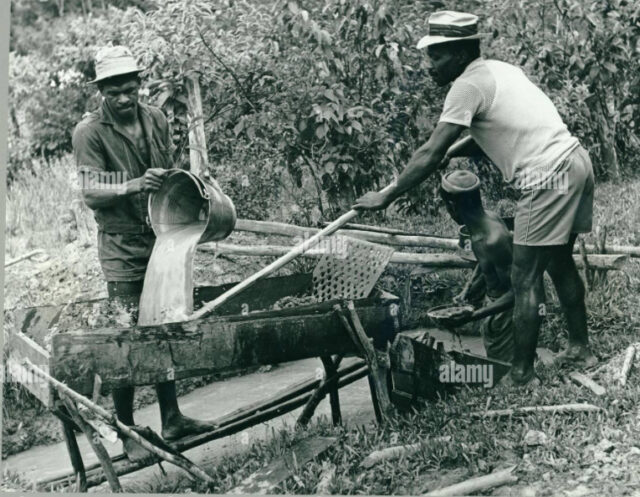
By: Sueann Wickham
Before the onset of Guyana’s thriving oil and gas industry, this country was known for something other than its oil, lush rainforests and diverse wildlife. It was known for GOLD! From the humble beginnings of small-scale operations along the rivers to the modern-day boom of large-scale mining, the sector has witnessed a remarkable journey of transformation.
This week, Guyana Standard will highlight Guyana’s gold mining history and explore how this sector is currently thriving, contributing significantly to the country’s economy.
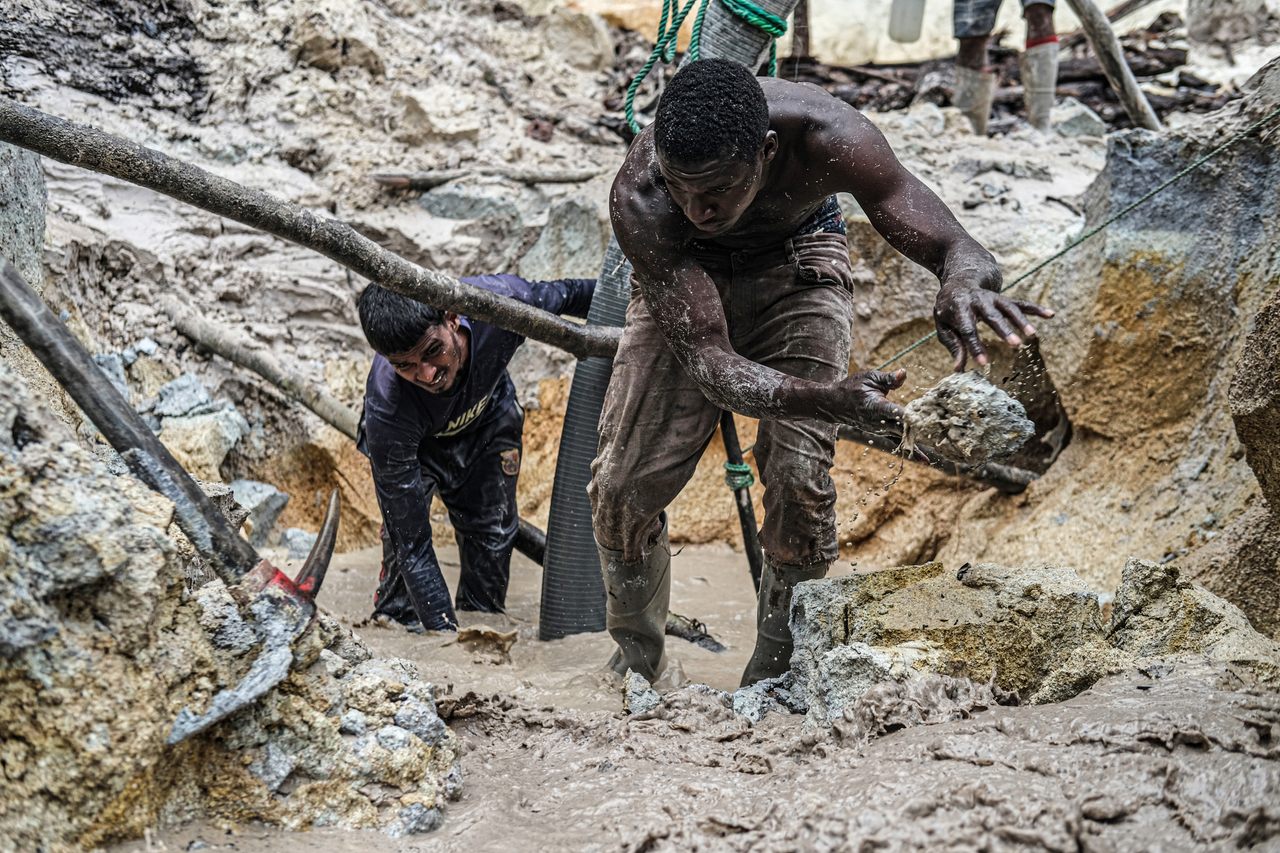
The story of Guyana’s gold mining industry began with the arrival of British colonizers in the early 1800s. Armed with basic hand tools, these pioneers ventured along the rivers, seeking alluvial gold deposits. However, it was the discovery of gold in the Potaro River in 1879 that ignited a frenzy. News spread like wildfire, attracting thousands of miners from across the globe, eager to stake their claim in this newfound “El Dorado”. The gold rush had only just begun.
As the 20th century dawned, gold mining in Guyana underwent a significant transformation. Companies such as the Demerara Gold Mining Company and the Guyana Goldfields Limited, now operated by AGM Inc/Zijin Mining Group emerged, introducing mechanized techniques and boosting gold production. The advent of machinery and modern equipment enabled miners to delve deeper into the earth, extracting gold from hard rock deposits. The once modest operations blossomed into large-scale mining endeavors, marking a new era of progress and prosperity.
Nationalization and the Dark Days
In the 1970s, the Guyanese government sought to assert control over the gold mining industry, leading to the nationalization of key mining assets. The establishment of the state-owned Omai Gold Mines Limited aimed to ensure that the benefits of gold mining were shared among the Guyanese people. However, mismanagement and plummeting gold prices cast a shadow over the sector. Production declined, and several mines faced closure, leaving the future of gold mining in Guyana uncertain. Many were under the impression that ‘Wha rain can’t full, dew can’t full’—and olden Guyanese proverb which signifies that if something was not successful then nothing else can make it happen.
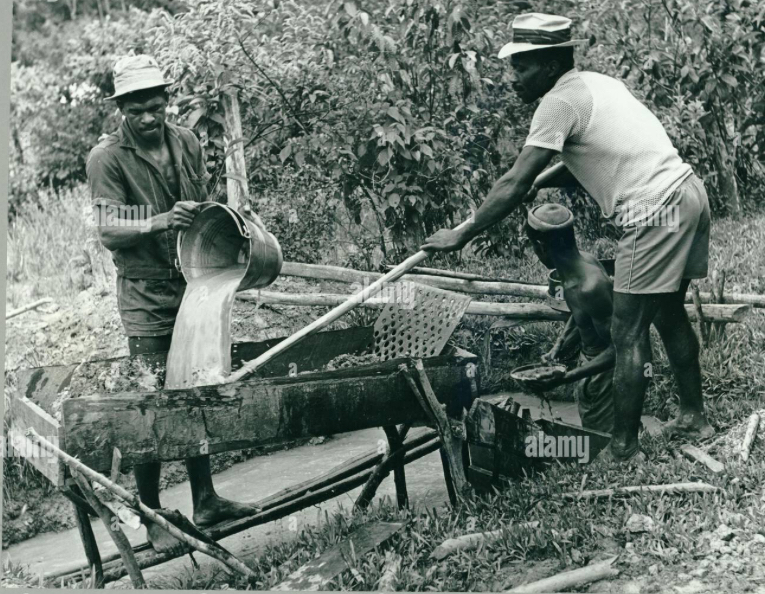
However, the 1990s witnessed a pivotal moment in Guyana’s gold mining history as the government embarked on a path of privatization. Opening doors to foreign investment, the aim was to infuse capital, expertise, and technology into the industry. This move breathed new life into the sector, ushering in modern mining techniques, equipment, and technologies. Large-scale mining operations, such as the Aurora Gold Mine owned by Guyana Goldfields Inc. and the Karouni Gold Mine owned by Troy Resources Limited, emerged as key players, driving the sector forward.
Over the years, the allure of wealth from gold has at times overshadowed ethical considerations, leading to a struggle against corruption within the industry.
From questionable licensing processes to the exploitation of labour, the industry has grappled with issues that undermine its potential for sustainable growth. Addressing these challenges is essential not only for the integrity of the sector but also for the overall well-being of the nation.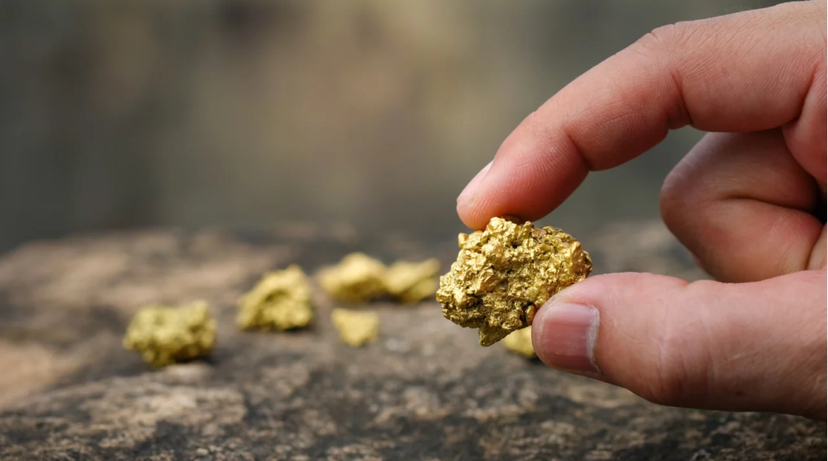
The struggle against corruption in Guyana’s gold industry has been exemplified by specific cases, including allegations surrounding Troy Resources. This Australian mining company has faced scrutiny for its operations in Guyana, with accusations of corrupt practices tarnishing its reputation. Instances of alleged bribery and unethical conduct have underscored the challenges the nation grapples with in ensuring integrity within its gold sector.
Despite facing obstacles however, Guyana has shown resilience in addressing corruption within its gold-producing ventures. Government initiatives, regulatory reforms, and increased transparency efforts aim to create an environment where the benefits of gold production can be equitably distributed. The struggle against corruption in Guyana’s gold industry is an ongoing narrative, with the nation still navigating the delicate balance between economic prosperity and ethical responsibility.
Today, Guyana’s gold mining industry stands tall as one of the country’s economic powerhouses, apart from oil. The Aurora Gold Mine, nestled in the Cuyuni-Mazaruni region, stands as a testament to the sector’s success, producing over 200,000 ounces of gold annually. The Karouni Gold Mine in the Puruni region adds to the glitter, contributing around 50,000 ounces of gold per year. These operations not only provide employment opportunities but also generate substantial revenue for the nation.
Environmental Concerns and Sustainable Practice
While the gold mining sector has played a vital role in Guyana’s economic growth, it has not been without its environmental challenges. One significant concern is the use of mercury in the extraction process, particularly in small-scale and artisanal mining operations.
The improper handling and disposal of mercury pose risks to local communities and ecosystems, leading to water pollution and health hazards. However, the government and mining companies are actively promoting responsible and sustainable mining practices. Efforts are underway to explore alternative methods to mercury and implement stricter environmental regulations, ensuring a balance between economic prosperity and environmental preservation.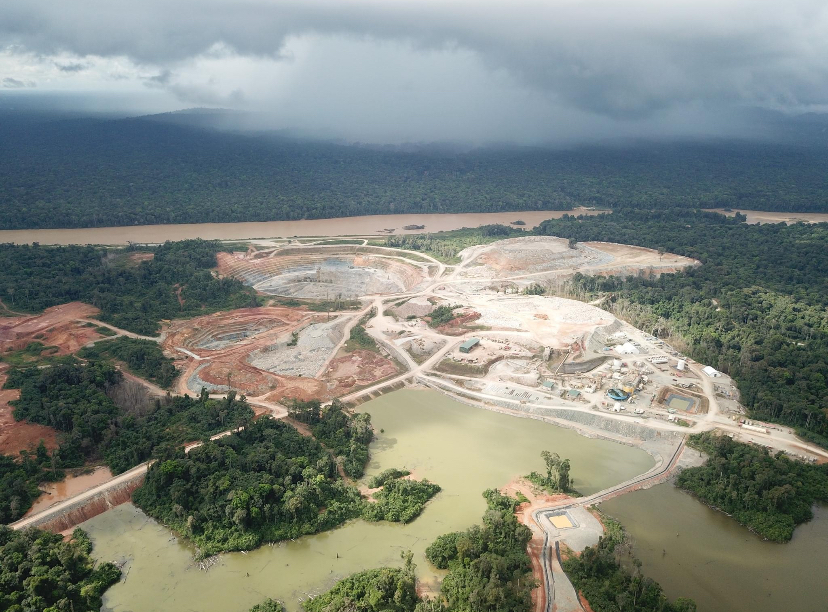
The future of Guyana’s gold mining sector shines brightly. Vast untapped gold reserves, particularly in the Guyana Shield, offer immense potential for further growth and prosperity. The recent discovery of large deposits in this geological formation has heightened the country’s allure as a major gold producer. Encouraging foreign investment and implementing favorable policies, the government now aims to attract more mining companies to unlock the untold treasures beneath Guyana’s soil. With ongoing investments, technological advancements, and the exploration of new deposits, the stage is set for a golden future.
From the early days of small-scale operations to the modern era of large-scale mining, the industry has weathered storms and emerged stronger. It remains a pillar of Guyana’s economy, contributing significantly to its growth and development. With responsible mining practices, environmental stewardship, and a treasure trove of untapped reserves, Guyana’s golden dreams are poised to become a shining reality.










